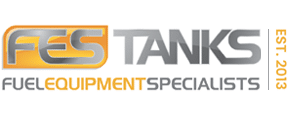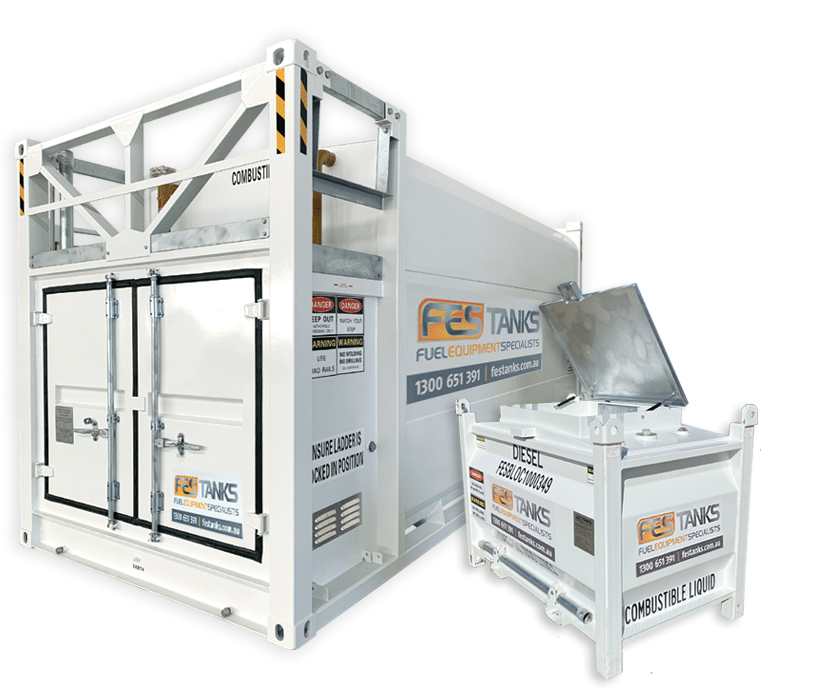Getting diesel fuel tanks right
With the Australian Government’s announcement of diesel fuel tank storage grants of up to $33 million each as part of its commitment to boosting the nation’s fuel security – and a corresponding obligation for industry to boost diesel storage levels by 40 per cent – choosing the right diesel storage solution has never been more important.
The Boosting Australia’s Diesel Storage program recognises that accessing fuel when it’s needed is vital for Australian business, critical infrastructure and a reliable supply chain.
The program will provide up to $200 million in competitive grants over three years to support construction of an additional 780 megalitres of onshore diesel storage.
It will also assist industry in meeting the new minimum stockholding obligation by 2024.
“Fuel, and diesel in particular, is the lifeblood of so many sectors in our economy, including our farmers, truckies and tradies. It is essential that we get the right balance and location of our onshore stockholdings,” Minister for Energy and Emissions Reduction Angus Taylor said.
“Diesel is crucial to Australia’s energy security as it underpins our critical infrastructure, transport sector and important industries, such as mining and agriculture. It is also critical during an emergency for essential services.
“Increasing Australia’s capacity to store diesel complements our other fuel security measures. This will strengthen our ability to manage potential disruptions, protect Australian motorists from future high prices, and keep our economy moving.”
The decision comes as diesel fuel storage infrastructure continues to evolve, with new solutions for everything from bulk refuelling stations to fleet refuelling, utilities depots, farms and construction projects providing new flexibility, security and cost savings.
Which diesel tank option is right for me?
Whether you’re powering a freight fleet, fuelling a broadacre farm or getting the job done at a remote construction site or mining operation, diesel fuel is a major expense. Storing your fuel in the right diesel fuel tank can save you dollars in improved productivity and reduced downtime but investing in the right diesel storage tanks for your business can also save you on site preparation and ongoing costs.
From underground bulk diesel storage tanks to self-bunded farm fuel storage solutions or remote refuelling options for freight fleets, there are a few central considerations that can help you make the right choice.
Fuel storage compliance – start with the right advice
Your fuel is a valuable investment, which is why getting compliance right is important.
When it comes to storing diesel fuel safely and in compliance with relevant national and regional regulations, getting the right advice from the start can save you money, reduce risk and give you peace of mind.
In Australia, the key standards governing fuel storage in diesel tanks are:
- AS1940 Australian Standards for the Storage and Handling of Flammable and Combustible Liquids
- AS1692 Steel Tanks for Flammable and Combustible Liquids
- AS1657 Workplace access and safety
International standards include:
- UL142 Global standard for tanks holding flammable and combustible liquids
- UL2085 Standard for protected above-ground tanks for flammable and combustible liquids
It’s important to ensure the diesel tank you choose meets all relevant standards and is installed in line with local, state and Federal environmental and safety requirements. Environmental and safety legislation is different across urban, regional and remote areas, storage volumes, fuel types, business models and storage systems.
Underground diesel storage tanks
Underground diesel fuel tanks remain a popular option for businesses that need to keep large quantities of fuel (more than 10,000 litres) in a relatively secure and stable environment. They’ve typically been the go-to for businesses including service stations and retail fuel operations where space may be at a premium. Other advantages include reduced fuel loss due to evaporation and excellent fuel security.
On the downside, condensation tends to be a bigger issue when storing diesel in underground tanks. To minimise this problem it’s advisable to run the tanks at a minimum 70-80 per cent of capacity, to minimise the air space above the fuel level. It’s also important to use a water finding paste regularly so that water collecting below the fuel can be pumped out before diesel bugs cause fuel degradation.
Ageing Underground Petroleum Storage Systems (UPSS) can also represent a serious environmental and cost issue for your business.
Older underground diesel tanks have the potential to leak, leading to expensive clean-up bills and damage to the environment. Replacement and maintenance is also a major exercise representing a serious investment.
UPSS Regulations require owners and operators to regularly check for leaks in the fuel tanks and pipes used to store and handle petroleum products. They also need to meet minimum standards in their day-to-day environmental management of these storage systems. It’s important to speak to an expert about the requirements for UPSS in your area.
Above ground diesel tank options
Above-ground tripod diesel fuel tanks are a traditionally popular solution for smaller fuel volumes up to 2000 litres – commonly used on farming properties.
The good thing about tripod tanks is no electric pumps are needed, because fuel can be dispensed by gravity feed. There’s also no need for bunding because the smaller size tanks falls below environmental legislation for fuel containment. On the downside, access for cleaning, checking and refilling can be a major drawback.
If you need to store large volumes of diesel fuel, single wall horizontal steel storage tanks that comply with Australian standards are a cost effective alternative to underground storage. Tanks up to 150,000 litres capacity can be placed side by side and manifolded, to minimise pipework. On the downside, Australian fuel storage regulations require tanks over 10,000 litres to be contained by a bund, meaning additional site preparation costs and reduced flexibility if you need to relocate your storage to meet changing refuelling needs.
The self-bunded diesel fuel tanks revolution
On-ground self-bunded diesel tanks are an increasingly popular alternative to traditional in-ground or above ground storage options, revolutionising diesel storage in urban and remote locations. In sizes up to 110,000 litres, self-bunded diesel tanks are fully compliant with Australian and international standards and don’t require external bund walls, making installation simple even in remote or hard to access locations. The design of the tanks also means they can be easily secured on site and can be easily maintained to keep fuel fresh for longer, minimising machinery maintenance costs.
Small self bunded cube style portable diesel tanks in sizes from 1000 litres provide fast and flexible small-volume portable diesel fuel storage – ideal for operators wanting to get the competitive savings and reliability of large volume fuel storage with all the flexibility of a design and drop installation.
High volume self-bunded diesel storage tanks in sizes up to 110,000 litres are a popular option for large scale fuel farms at remote mine sites, because multiple fuel storage tanks can be easily connected to create a large volume, high demand refuelling facility.
Site preparation is minimal and self-bunded tanks are easier to install, clean and maintain than traditional underground fuel storage systems, with easy secure access and the capability to work with the latest fuel distribution and management technology.
Need help? Ask the experts.
For help in choosing the right diesel tank option to simplify and streamline your operations, it makes sense to ask the experts.
F.E.S. TANKS is Australia’s leader in self-bunded storage tanks. For advice on the system that’s right for you, call the F.E.S. TANKS team on 1300 651 391.





No comment yet, add your voice below!